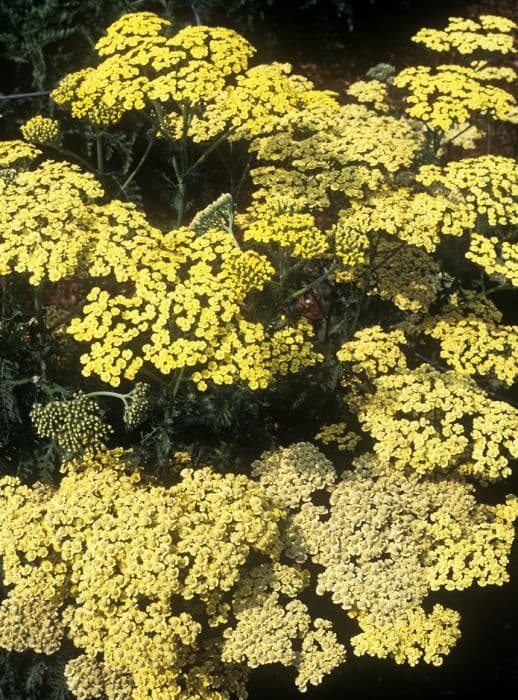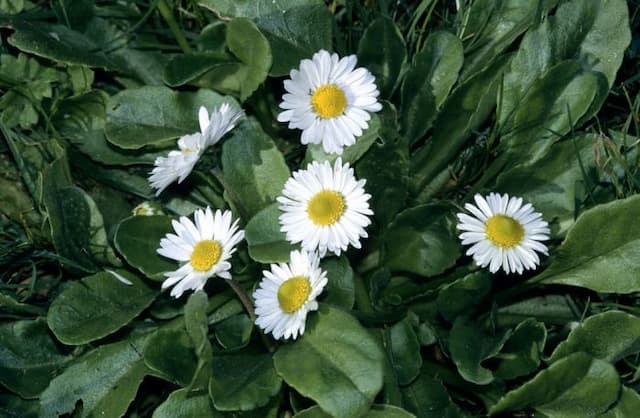Tarragon Artemisia dracunculus

ABOUT
Artemisia dracunculus, commonly known as tarragon, is a perennial herb with a rhizomatous growth habit. The plant bears slender, branched stems and glossy, lance-shaped leaves that are finely divided and can be green or slightly grayish in color. The foliage has a distinctive aromatic scent that is characteristic of the tarragon herb, which is widely used for culinary purposes. Tarragon produces tiny, pale yellow flowers arranged in small, compact clusters at the tips of the stems. These flowers eventually give way to achenes, a type of small, dry fruit. The overall appearance of tarragon is that of an upright, bushy herb with a cascading leaf structure that provides a soft-textured look in gardens and culinary plots.
About this plant
 Names
NamesFamily
Asteraceae.
Synonyms
Tarragon, Estragon, Dragon's-wort, French Tarragon, Russian Tarragon, German Tarragon.
Common names
Artemisia glauca, Artemisia cernua, Artemisia inodora, Artemisia champlainensis, Artemisia dracunculoides, Artemisia changaica, Artemisia eschscholtziana, Artemisia caudata, Artemisia incana, Artemisia indica, Artemisia macrocephala, Artemisia piperita, Artemisia pseudodracunculus, Artemisia redowskyi, Artemisia serotina, Artemisia siversiana, Dracunculus esculentus, Oligosporus dracunculiformis, Oligosporus dracunculoides, Oligosporus dracunculus.
 Toxicity
ToxicityTo humans
Tarragon (Artemisia dracunculus) is generally considered non-toxic to humans when consumed in the amounts commonly found in food. It is widely used as a culinary herb. However, consuming large amounts of tarragon, or using it as a medicinal herb over an extended period, could potentially cause adverse effects due to the presence of estragole, a compound found in tarragon that is a known carcinogen and hepatotoxin in high doses. Overconsumption could lead to symptoms such as nausea, dizziness, and in extreme cases, may affect the nervous system. Pregnant women are advised to avoid excessive intake of tarragon due to potential risk of miscarriage.
To pets
Tarragon is not commonly listed as a toxic plant to pets, such as dogs and cats. However, in large amounts, similar to humans, the estragole content in tarragon could potentially cause gastrointestinal upset or more serious health issues. Pets ingesting significant amounts could exhibit symptoms like vomiting or diarrhea, and more severe reactions could include liver toxicity or neurological symptoms. It is always recommended to exercise caution and keep the amount of herb pets may ingest to a minimum to prevent any potential adverse health effects.
 Characteristics
CharacteristicsLife cycle
Perennials
Foliage type
Deciduous
Color of leaves
Green
Height
2-4 feet (0.6-1.2 meters)
Spread
2-3 feet (0.6-0.9 meters)
Plant type
Herb
Hardiness zones
4
Native area
Eurasia
Benefits
 General Benefits
General Benefits- Culinary Uses: Artemisia dracunculus, commonly known as tarragon, is widely used as a herb in cooking to flavor a variety of dishes, particularly in French cuisine.
- Aromatic Qualities: Tarragon has a distinctive aroma that makes it a popular choice for infusing oils and vinegars, as well as in potpourri.
- Garden Aesthetics: As an ornamental plant, tarragon features narrow, glossy green leaves that can add visual appeal to gardens and landscapes.
- Companion Planting: Tarragon can be beneficial when planted alongside vegetables and other herbs as it is believed to enhance the growth and flavor of certain plants.
- Culinary Preservation: Tarragon leaves can be dried or frozen, making it easy to preserve the herb for use throughout the year.
- Wildlife Attraction: The flowers of tarragon can attract beneficial insects to the garden, such as bees and other pollinators.
 Medical Properties
Medical Properties- Antimicrobial activity: Artemisia dracunculus has shown potential in inhibiting the growth of some bacteria and fungi.
- Antioxidant effects: The plant contains compounds that may provide oxidative stress protection.
- Anti-inflammatory properties: May help in reducing inflammation in certain conditions.
- Gastrointestinal relief: Traditionally used to soothe an upset stomach and aid digestion.
- Menstrual relief: Historically used to alleviate menstrual pains and regulate the cycle.
- Diabetes management: Some studies suggest it may help in lowering blood sugar levels.
- Antispasmodic uses: Could potentially provide relief from muscle spasms and cramps.
 Air-purifying Qualities
Air-purifying QualitiesThis plant is not specifically known for air purifying qualities.
 Other Uses
Other Uses- As a natural pest repellent: The plant can be used in gardens to repel insects and pests, as many are deterred by its strong scent.
- Preservation of food: The herb can be included in packaging or storage containers to extend the shelf life of perishable goods due to its antioxidant components.
- Scented candles and oils: Tarragon's distinctive aroma is captured in candles and essential oils for aromatherapy and home fragrance products.
- Fabric dye: The plant has been used historically to produce a green dye for textiles.
- Flavor enhancer: Tarragon vinegar, made by steeping the leaves in vinegar, adds a unique flavor to culinary dishes.
- Decorative element: With its tall stems and narrow leaves, tarragon can be used in floral arrangements to add a touch of greenery.
- Crafts and potpourri: Dried tarragon can be added to potpourri mixes for its scent, or used in craft applications where its shape and texture are desired.
- Companion planting: In a garden, tarragon can be planted alongside other vegetables to promote overall garden health through its insect-repellent properties.
- Perfumery: The essential oil of tarragon can be used as a fragrance component in perfumes, especially in creating herbaceous or anise-like scents.
- Culinary arts education: As a classic herb in French cuisine, tarragon is used in teaching the fine points of flavor and seasoning in culinary schools.
Interesting Facts
 Feng Shui
Feng ShuiTarragon is not used in Feng Shui practice.
 Zodiac Sign Compitability
Zodiac Sign CompitabilityTarragon is not used in astrology practice.
 Plant Symbolism
Plant Symbolism- Healing: Artemisia dracunculus, commonly known as Tarragon, is associated with healing due to its historic use in herbal medicine for various ailments.
- Protection: It has been used in folk traditions to ward off evil spirits and harm, signifying spiritual and physical protection.
- Persistence: The hardy nature of Tarragon, capable of growing in challenging environments, symbolizes persistence and resilience.
- Culinary Delight: As an herb prominently used in French cuisine, Tarragon represents a love for culinary arts and the enjoyment of fine food.
 Water
WaterTarragon, the common name for Artemisia dracunculus, requires consistent moisture but must not be overwatered as it dislikes soggy soil. Water young tarragon plants regularly, aiming for at least 1 inch of water per week, which equates to about 0.6 gallons for a square foot. Once established, tarragon is quite drought-tolerant and the watering frequency can be reduced. Ensure the topsoil is dry to the touch before watering again to prevent root rot. During the growing season, especially in hot, dry weather, more frequent watering may be necessary, but always check the soil moisture first.
 Light
LightTarragon thrives in full sun, meaning it should receive at least 6 to 8 hours of direct sunlight daily. It can tolerate light shade, but this may impact the strength of its flavor and the plant's overall vigor. The ideal spot for tarragon is in an area that gets plenty of light throughout the day, such as a south-facing garden or a sunny windowsill if growing indoors.
 Temperature
TemperatureTarragon prefers a temperate range between 70 to 77 degrees Fahrenheit, although it can survive temperatures as low as 50 degrees Fahrenheit and as high as 90 degrees Fahrenheit. Prolonged exposure to temperatures outside this range can impair its growth. It's essential to protect tarragon from frost, which can severely damage or kill the plant.
 Pruning
PruningTarragon should be pruned to encourage bushier growth and to prevent legginess. Do this by trimming the tips of the branches periodically throughout the growing season. The best time to prune tarragon extensively is in early spring or after the last frost, when the plant is starting to show new growth. Pruning can be done again in the fall to keep the plant tidy before winter dormancy.
 Cleaning
CleaningAs needed
 Soil
SoilTarragon (Artemisia dracunculus) thrives in a well-draining soil mix with a pH between 6.3 and 7.5. A combination of loamy soil, peat, perlite, and sand is ideal to ensure proper drainage and aeration. It's critical to avoid soil that retains too much moisture, as tarragon is prone to root rot.
 Repotting
RepottingTarragon should be repotted every two to three years to prevent it from becoming root-bound and to replenish its nutrients. Choose a pot that is one size larger than the current one, and repot in spring just before the new growth starts.
 Humidity & Misting
Humidity & MistingTarragon prefers a moderate humidity level, typical of its native temperate climate. It can tolerate some dryness but excessive humidity can lead to fungal issues, so aim for humidity levels that mimic its natural environment without being too damp.
 Suitable locations
Suitable locationsIndoor
Place tarragon near a sunny window and avoid overwatering.
Outdoor
Plant tarragon in full sun and well-draining soil.
Hardiness zone
4-9 USDA
 Life cycle
Life cycleTarragon (Artemisia dracunculus) typically begins its life cycle with seed germination, which occurs in warm soil with sufficient moisture. The seedlings develop into vegetative plants showcasing oblong, narrow, glossy green leaves characteristic of tarragon. As the plant matures, it enters a phase of vegetative growth where it invests energy into expanding its root system and foliage during the warm seasons. Tarragon is a perennial herb, so after the first growing season, it will go dormant in the winter, with the above-ground foliage dying back, while the roots remain alive underground. In subsequent years, the plant will re-sprout from the rootstock in spring, developing stems and leaves anew, and will sometimes produce small, inconspicuous flowers that are typically sterile, as tarragon is often propagated vegetatively through root division or cuttings. As it enters the final stage of its life cycle, the tarragon plant may become woody and less vigorous, prompting gardeners to replace older plants to maintain productivity.
 Propogation
PropogationPropogation time
Spring to early summer
Tarragon (Artemisia dracunculus) is commonly propagated through division, which is considered the most popular method due to the plant’s tendency to produce fewer, less viable seeds. The best time to divide tarragon is in the early spring or fall when temperatures are moderate. To propagate tarragon via division, carefully dig up an established tarragon plant, making sure to preserve as much of the root system as possible. Gently separate the clumps of stems and roots into smaller sections, ensuring each new section has a part of the root system. Then, plant these divisions into well-draining soil, spaced about 18 to 24 inches (approximately 45 to 60 centimeters) apart, to allow ample room for growth. Water the new divisions regularly until they are established and new growth appears. This method allows for preserving the true flavor and characteristics of the tarragon, as opposed to seed propagation, which may result in a loss of the distinctive tarragon taste.









